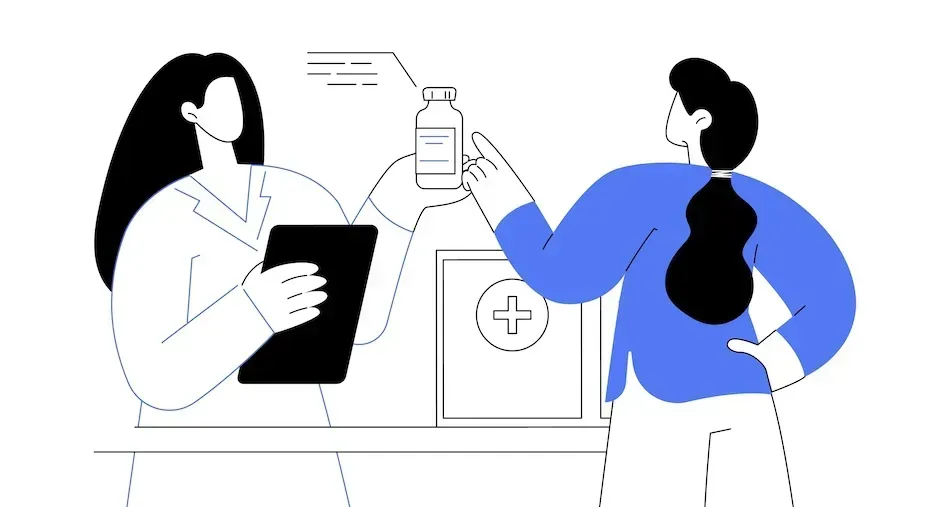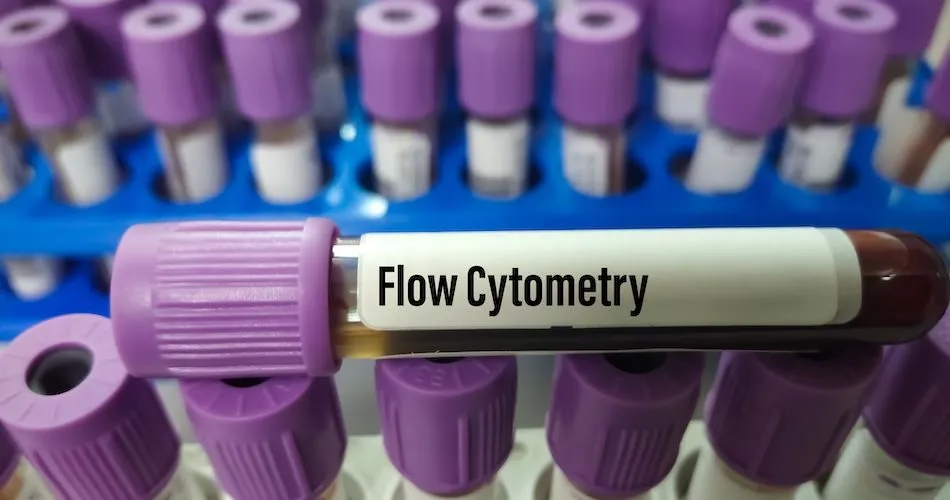What to Know about Graft-Versus-Host-Disease After Stem Cell Transplant

Graft-versus-host disease (GVHD) is a serious complication that can occur after an allogeneic stem cell transplant. During an allogeneic stem cell transplant, a patient receives healthy stem cells from a donor. GVHD happens when the donated stem cells (known as the graft) attack the patient’s healthy cells (known as the host). GVHD can be acute or chronic. The symptoms of GVHD vary depending on how severe the reaction is.
What is acute GVHD and what are the symptoms?
Acute GVHD typically occurs in the first 3 months following a stem cell transplant. It affects the skin, liver, and gastrointestinal (GI) tract.
Getting early treatment for acute GVHD is important. Knowing the signs and symptoms of acute GVHD can help you know when to seek care. Contact your health care team if you have any of these problems after an allogeneic stem cell transplant.
Skin symptoms. A rash is the most common symptom of acute GVHD affecting the skin. The rash can be mild or severe, and it can be on any part of the body. It can start in one area and spread to the entire body. The rash may cause itching, pain, blistering, and/or peeling.
On lighter skin tones, the rash can start as a faint redness and may look like a sunburn. On darker skin tones, a GVHD rash may be more difficult to see. It may look brown or dark purple instead of red.
GI tract symptoms. The most common symptom of GVHD that affects the GI tract is diarrhea. The diarrhea can be severe. Nausea, vomiting, loss of appetite, and blood in the stool can also happen.
Liver symptoms. Often when GVHD affects the liver, there are no symptoms. Instead, liver problems will be found with a blood test. Liver damage can cause jaundice. This happens when the liver can’t process a substance called bilirubin, which is found in the blood. Jaundice makes your skin and eyes appear yellow. If you have a darker skin tone, it may be easier to see the color change on your palms, soles of your feet, and gums. GVHD can cause liver failure.
What is chronic GVHD and what are the symptoms?
Chronic GVHD typically occurs at least 100 days after transplant. In Like acute GVHD, chronic GVHD affects the skin, liver, and GI tract, causing the symptoms listed above. Chronic GVHD also affects the mouth, eyes, lungs, joints, nerves, muscles, genitals, and connective tissue.
Skin, hair, and nails symptoms. Like acute GVHD, chronic GVHD can cause a rash. The skin can also get thick, which can make it more difficult to move joints. It can also cause sores that do not heal.
Chronic GVHD can cause changes to how your nails feel, make your nails hard and brittle, or cause you to lose your nails. It can also cause hair loss on your head or body and gray hair.
Eye symptoms. Chronic GVHD can cause your eyes to be dry, red, painful, and itchy. It can also make you sensitive to bright lights and wind. Blurred vision and making too many tears can also happen. In rare cases, if chronic GVHD is not treated, it can cause blindness.
Mouth and throat symptoms. Chronic GVHD can cause mouth and throat sores, sensitivity, and dry mouth. Dry mouth can also cause gum disease and tooth problems.
This can make it more difficult to eat and cause trouble swallowing.
GI tract symptoms. Chronic GVHD can cause nausea, vomiting, and diarrhea. It can also cause pain in the belly. In some cases these symptoms can be severe.
Liver symptoms. Like acute GVHD, chronic GVHD can cause liver problems. It is important to watch for signs of jaundice (see above).
Lung symptoms. Chronic GVHD can cause problems in your lungs, such as shortness of breath and a cough that doesn’t go away.
Joint and muscle symptoms. Pain and stiffness in your joints may be a sign of chronic GVHD. You can also have muscle pain, cramps, and weakness.
Symptoms affecting the genitals. You may experience irritation and dryness or a rash around your genitals. Chronic GVHD can also cause painful intercourse.
GVHD Risk Factors
Not everyone who receives a stem cell transplant will develop GVHD. Some factors can make it more likely such as:
Donor–patient match: The risk of GVHD is higher when the donor is not a perfect match. Donors are matched by human leukocyte antigen (HLA). These are tissues tested to determine donor-recipient compatibility. The risk of GVHD is also higher when the donor and patient are not the same sex.
Type of stem cells used: The stem cells used during a stem cell transplant can come from three different sources: umbilical cord blood, peripheral blood, and bone marrow. Some sources lower the risk of GVHD. Peripheral blood is blood that is circulating throughout the body. Using stem cells from umbilical cord blood or freezing (cryopreserving) bone marrow rather than peripheral blood before transplant can lower the risk of GVHD.
Chemotherapy and radiation before transplant: Receiving strong treatments before the transplant can increase your risk of GVHD. High-dose chemotherapy and total body radiation can damage tissues and cause the immune system to release large amounts of inflammatory signals.
Medicines used to prevent GVHD: There are medications used to prevent GVHD. This is called prophylaxis. Using three medicines together (cyclosporine, methotrexate, and prednisone) works better at lowering GVHD risk than using just two (cyclosporine and methotrexate).
Confirming a GVHD diagnosis
Your doctor will conduct a physical examination and run laboratory tests to confirm a GVHD diagnosis and rule out other conditions.
Diagnosis begins by evaluating the eyes, mouth, skin, joints, and genitals. Your doctor may also ask about changes to your gastrointestinal (GI) health, such as nausea, diarrhea, and weight loss.
Laboratory testing can identify certain biomarkers that point to GVHD. Your doctor may also order testing to look for an increase in serum bilirubin. Having too much bilirubin in the blood can indicate liver damage or disease.
In some cases, skin and GI biopsies, the removal of a sample of tissue or cells for testing, may be required to confirm the diagnosis.
Treatment options for GVHD
The right treatment for GVHD depends on factors such as whether it is chronic or acute, your overall health, and your ability to tolerate different medications.
Steroids, like prednisone and dexamethasone, are a first-line treatment for GVHD and help to lower your body’s immune system response. In GVHD, this helps to stop the body from damaging healthy cells after a stem cell transplant.
When immunosuppressants weaken your immune system, they increase your risk for infection. Your doctor will prescribe medications that help to prevent these infections.
Your doctor may also prescribe topical ointments to help treat inflammation and other skin reactions.
Bruton’s Tyrosine Kinase Inhibitors (BTK Inhibitors) are used when standard treatments are unsuccessful. They can help delay the progression of chronic GVHD by targeting unhealthy cells.
Supportive care can help with managing GVHD symptoms
Supportive care also plays a key role in managing GVHD. It may include pain relief, skin care, physical therapy, and nutritional support. It can also include treatments for complications affecting the liver, lungs, or GI tract, and preventing and managing infections.
GVHD is a serious condition and research continues to make it more manageable. Following a personalized care plan can help to improve your outcomes.
You can contribute to furthering research that improves health outcomes by creating a HealthTree account today. Here you can share your experience and complete simple surveys that help researchers better understand the lived experiences of people with blood cancer.
Sources:
Graft-versus-host disease (GVHD) is a serious complication that can occur after an allogeneic stem cell transplant. During an allogeneic stem cell transplant, a patient receives healthy stem cells from a donor. GVHD happens when the donated stem cells (known as the graft) attack the patient’s healthy cells (known as the host). GVHD can be acute or chronic. The symptoms of GVHD vary depending on how severe the reaction is.
What is acute GVHD and what are the symptoms?
Acute GVHD typically occurs in the first 3 months following a stem cell transplant. It affects the skin, liver, and gastrointestinal (GI) tract.
Getting early treatment for acute GVHD is important. Knowing the signs and symptoms of acute GVHD can help you know when to seek care. Contact your health care team if you have any of these problems after an allogeneic stem cell transplant.
Skin symptoms. A rash is the most common symptom of acute GVHD affecting the skin. The rash can be mild or severe, and it can be on any part of the body. It can start in one area and spread to the entire body. The rash may cause itching, pain, blistering, and/or peeling.
On lighter skin tones, the rash can start as a faint redness and may look like a sunburn. On darker skin tones, a GVHD rash may be more difficult to see. It may look brown or dark purple instead of red.
GI tract symptoms. The most common symptom of GVHD that affects the GI tract is diarrhea. The diarrhea can be severe. Nausea, vomiting, loss of appetite, and blood in the stool can also happen.
Liver symptoms. Often when GVHD affects the liver, there are no symptoms. Instead, liver problems will be found with a blood test. Liver damage can cause jaundice. This happens when the liver can’t process a substance called bilirubin, which is found in the blood. Jaundice makes your skin and eyes appear yellow. If you have a darker skin tone, it may be easier to see the color change on your palms, soles of your feet, and gums. GVHD can cause liver failure.
What is chronic GVHD and what are the symptoms?
Chronic GVHD typically occurs at least 100 days after transplant. In Like acute GVHD, chronic GVHD affects the skin, liver, and GI tract, causing the symptoms listed above. Chronic GVHD also affects the mouth, eyes, lungs, joints, nerves, muscles, genitals, and connective tissue.
Skin, hair, and nails symptoms. Like acute GVHD, chronic GVHD can cause a rash. The skin can also get thick, which can make it more difficult to move joints. It can also cause sores that do not heal.
Chronic GVHD can cause changes to how your nails feel, make your nails hard and brittle, or cause you to lose your nails. It can also cause hair loss on your head or body and gray hair.
Eye symptoms. Chronic GVHD can cause your eyes to be dry, red, painful, and itchy. It can also make you sensitive to bright lights and wind. Blurred vision and making too many tears can also happen. In rare cases, if chronic GVHD is not treated, it can cause blindness.
Mouth and throat symptoms. Chronic GVHD can cause mouth and throat sores, sensitivity, and dry mouth. Dry mouth can also cause gum disease and tooth problems.
This can make it more difficult to eat and cause trouble swallowing.
GI tract symptoms. Chronic GVHD can cause nausea, vomiting, and diarrhea. It can also cause pain in the belly. In some cases these symptoms can be severe.
Liver symptoms. Like acute GVHD, chronic GVHD can cause liver problems. It is important to watch for signs of jaundice (see above).
Lung symptoms. Chronic GVHD can cause problems in your lungs, such as shortness of breath and a cough that doesn’t go away.
Joint and muscle symptoms. Pain and stiffness in your joints may be a sign of chronic GVHD. You can also have muscle pain, cramps, and weakness.
Symptoms affecting the genitals. You may experience irritation and dryness or a rash around your genitals. Chronic GVHD can also cause painful intercourse.
GVHD Risk Factors
Not everyone who receives a stem cell transplant will develop GVHD. Some factors can make it more likely such as:
Donor–patient match: The risk of GVHD is higher when the donor is not a perfect match. Donors are matched by human leukocyte antigen (HLA). These are tissues tested to determine donor-recipient compatibility. The risk of GVHD is also higher when the donor and patient are not the same sex.
Type of stem cells used: The stem cells used during a stem cell transplant can come from three different sources: umbilical cord blood, peripheral blood, and bone marrow. Some sources lower the risk of GVHD. Peripheral blood is blood that is circulating throughout the body. Using stem cells from umbilical cord blood or freezing (cryopreserving) bone marrow rather than peripheral blood before transplant can lower the risk of GVHD.
Chemotherapy and radiation before transplant: Receiving strong treatments before the transplant can increase your risk of GVHD. High-dose chemotherapy and total body radiation can damage tissues and cause the immune system to release large amounts of inflammatory signals.
Medicines used to prevent GVHD: There are medications used to prevent GVHD. This is called prophylaxis. Using three medicines together (cyclosporine, methotrexate, and prednisone) works better at lowering GVHD risk than using just two (cyclosporine and methotrexate).
Confirming a GVHD diagnosis
Your doctor will conduct a physical examination and run laboratory tests to confirm a GVHD diagnosis and rule out other conditions.
Diagnosis begins by evaluating the eyes, mouth, skin, joints, and genitals. Your doctor may also ask about changes to your gastrointestinal (GI) health, such as nausea, diarrhea, and weight loss.
Laboratory testing can identify certain biomarkers that point to GVHD. Your doctor may also order testing to look for an increase in serum bilirubin. Having too much bilirubin in the blood can indicate liver damage or disease.
In some cases, skin and GI biopsies, the removal of a sample of tissue or cells for testing, may be required to confirm the diagnosis.
Treatment options for GVHD
The right treatment for GVHD depends on factors such as whether it is chronic or acute, your overall health, and your ability to tolerate different medications.
Steroids, like prednisone and dexamethasone, are a first-line treatment for GVHD and help to lower your body’s immune system response. In GVHD, this helps to stop the body from damaging healthy cells after a stem cell transplant.
When immunosuppressants weaken your immune system, they increase your risk for infection. Your doctor will prescribe medications that help to prevent these infections.
Your doctor may also prescribe topical ointments to help treat inflammation and other skin reactions.
Bruton’s Tyrosine Kinase Inhibitors (BTK Inhibitors) are used when standard treatments are unsuccessful. They can help delay the progression of chronic GVHD by targeting unhealthy cells.
Supportive care can help with managing GVHD symptoms
Supportive care also plays a key role in managing GVHD. It may include pain relief, skin care, physical therapy, and nutritional support. It can also include treatments for complications affecting the liver, lungs, or GI tract, and preventing and managing infections.
GVHD is a serious condition and research continues to make it more manageable. Following a personalized care plan can help to improve your outcomes.
You can contribute to furthering research that improves health outcomes by creating a HealthTree account today. Here you can share your experience and complete simple surveys that help researchers better understand the lived experiences of people with blood cancer.
Sources:

about the author
Bethany Howell
Bethany joined HealthTree in 2025. She is passionate about supporting patients and their care partners and improving access to quality care.
More on Navigating Your Health
Trending Articles

Get the Latest Chronic Lymphocytic Leukemia Updates, Delivered to You.
By subscribing to the HealthTree newsletter, you'll receive the latest research, treatment updates, and expert insights to help you navigate your health.
Together we care.
Together we cure.
3x Faster.









